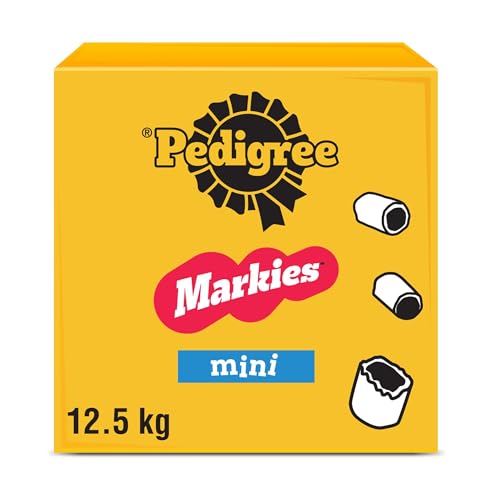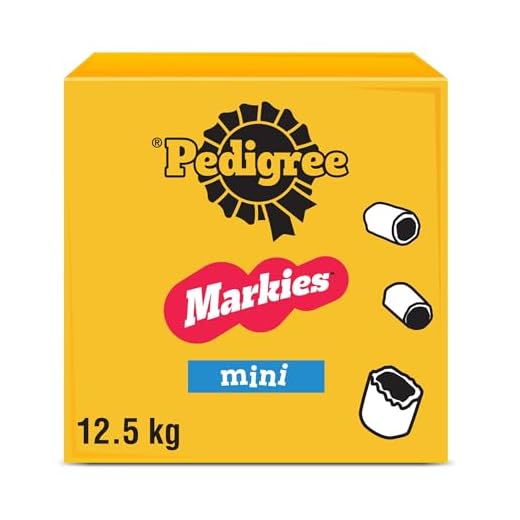




Experts suggest limiting snacks to no more than 10% of the total caloric intake for your furry friend. For a typical canine weighing around 25 kg, this roughly translates to about 200 calories allocated to snacks each day. It’s vital to adjust this based on individual needs, activity levels, and overall health.
Consider the types of goodies being offered. High-quality options like fresh fruits and vegetables can be great choices. A few carrot sticks or apple slices can serve as delightful alternatives without overwhelming their diet. However, keep in mind that some items, such as grapes and chocolate, are harmful and should be strictly avoided.
Tracking the total caloric consumption, including meals and snacks, will help maintain a healthy weight for your companion. Regular vet check-ups can provide tailored advice, ensuring that the balance of nutrition remains in check. This approach not only promotes physical health but also aids in maintaining that playful spirit we all adore.
Optimal Quantity for Treats
For a healthy balance, limit rewards to about 10% of your canine companion’s daily caloric intake. For instance, if your furry friend requires 500 calories each day, allocate no more than 50 calories for snacks. This approach helps maintain their ideal weight and overall well-being.
Adjusting Based on Size and Activity Level
Consider your pet’s size and energy expenditure. Smaller breeds may only need a few small biscuits, while larger ones can handle bigger rewards. If your pooch leads a more active lifestyle, they may benefit from slightly higher quantities, but always monitor their weight. Regular vet check-ups can provide tailored advice to ensure your buddy stays fit.
Quality Over Quantity
Opt for nutritious options that provide health benefits. Look for treats rich in protein and low in fillers. Homemade alternatives, like bits of fruit or veggies, can be excellent choices. Remember, it’s about the joy of giving, not just the amount. Keeping it varied and healthy keeps your pet excited and engaged!
Understanding Your Pet’s Daily Caloric Needs
For a furry companion weighing around 10 kg, the average caloric requirement ranges from 400 to 600 calories, depending on activity levels. Active pups will require more fuel than their less energetic counterparts. Always adjust based on your pet’s unique lifestyle, age, and health conditions.
Calculating the Right Amount
To determine the right caloric intake, consider these factors:
- Weight: A leaner build typically means fewer calories; heavier pets may need more.
- Activity Level: Daily walks and playtime increase caloric needs significantly.
- Age: Puppies and young dogs require more energy for growth, while seniors may need less.
- Health Conditions: Consult a vet if there are any specific dietary needs or restrictions.
Choosing Quality Nutrition
Opt for high-quality, nutritious food to meet these caloric needs. Consider the best natural wet food for dogs available, ensuring it provides the essential nutrients your pet requires. This approach helps maintain a balanced diet and supports overall health.
Monitoring your companion’s weight and energy levels can guide necessary adjustments. A healthy pet is an active and happy one, so keep a close eye on their diet and lifestyle for optimal well-being.
Calculating Treats Based on Dog Size and Weight
For a small canine, such as a Chihuahua or a Pomeranian, the maximum number of goodies should not exceed 2-3 pieces daily. These little ones have lower caloric requirements, so even a small morsel can make a significant impact on their diet.
Medium breeds like Beagles or Bulldogs may enjoy around 3-5 bites. Their size allows for a bit more flexibility, but portion control remains essential to prevent weight gain.
Large breeds, including Labradors and Golden Retrievers, can handle 5-10 pieces of snacks. These larger friends generally require more calories, but monitoring their intake is just as critical to maintain a healthy weight.
When considering size, it’s vital to factor in weight. For instance, a 10 kg canine might require fewer goodies compared to a 30 kg one, even if they belong to the same breed. Adjustments must be made based on the individual’s activity level and metabolism.
A simple guideline is to allocate no more than 10% of total caloric intake for goodies. If a furry companion needs 500 calories a day, limit snacks to 50 calories. Always check the packaging for specific caloric content, as it can vary significantly between different brands and types.
Finally, consult with a vet to tailor the numbers to your pet’s specific needs. Regular check-ups can help assess weight and overall health, ensuring those tasty bites contribute positively to their happiness and well-being.
Identifying Nutritional Value of Different Treats
Always check the ingredient list before choosing a snack for your furry friend. Treats with whole ingredients like meat, vegetables, and grains are usually healthier. For instance, a biscuit made from chicken and brown rice provides protein and fibre, beneficial for overall health.
Be cautious of treats loaded with fillers such as corn and soy, as they offer little nutritional benefit. Instead, look for options that include natural preservatives like tocopherols or ascorbic acid. These are safer than artificial additives and contribute positively to your pet’s diet.
Consider the caloric content as well. For instance, a small dental chew may contain around 30 calories, while a larger meat-based treat could exceed 100 calories. Keeping track of these values helps maintain a balanced diet and prevents excessive weight gain.
Some treats are specifically designed for dental health, containing enzymes that help reduce plaque. It’s wise to include these in your pet’s routine, as they support oral hygiene while serving as a tasty reward.
Finally, be aware of any allergens. Common culprits include wheat, dairy, and certain meats. If your companion has a sensitive stomach, opting for hypoallergenic options or grain-free varieties might be necessary. This attention to detail ensures a happy and healthy pet, ready to enjoy every moment together.
Signs of Overindulgence in Canine Snacks
Watch for these indicators if you suspect your furry friend is enjoying too many goodies. Sudden weight gain is a clear sign that the intake exceeds energy expenditure. If your pet seems to be gaining weight rapidly, it’s time to reassess the number of snacks offered.
Another red flag is a noticeable change in energy levels. A previously lively companion who becomes lethargic may be consuming excessive calories. This drop in activity often correlates with too many indulgences.
Keep an eye on gastrointestinal issues, such as diarrhoea or vomiting. Overindulgence can upset a sensitive stomach, leading to discomfort and health concerns. If you notice these symptoms, consider reducing the frequency of treats.
Changes in behaviour can also signal that your canine is overindulged. If your pet becomes more demanding for snacks or displays signs of food obsession, it might be time to set stricter boundaries around their feeding routine.
| Indicator | Description |
|---|---|
| Weight Gain | Rapid increase in body weight, indicating excessive calorie intake. |
| Lethargy | Decreased activity levels, suggesting discomfort or health issues. |
| Gastrointestinal Issues | Symptoms like vomiting or diarrhoea due to overconsumption. |
| Behavioural Changes | Increased demand for snacks or signs of food obsession. |
Maintaining a healthy balance is key to ensuring your beloved pet remains fit and happy. Monitoring these signs will help in creating a more balanced approach to snack time.
Establishing a Balanced Treat Routine
Limit indulgences to about 10% of total caloric intake. For instance, if your furry friend needs 500 calories daily, aim to keep snacking around 50 calories. This framework sets a solid foundation for a healthy lifestyle.
Incorporate variety by rotating flavours and textures. For example, if your pup enjoys crunchy biscuits one day, consider soft chews the next. This not only keeps them engaged but also offers a wider range of nutrients.
Timing plays a role too. Use rewards during training sessions or as a way to reinforce good behaviour. This method associates positive experiences with specific actions, making learning more enjoyable for your companion.
Pay attention to portion sizes. Most packs provide guidelines based on weight, but adjust according to your pet’s activity level. An active hound may require slightly more, while a couch potato needs less.
Monitor reactions closely. If your companion shows signs of gastrointestinal upset or weight gain, reevaluate the current regimen. Adjusting intake might be necessary to maintain optimal health.
Finally, involve your vet in the planning process. They can offer tailored advice based on your pet’s specific needs, ensuring a well-rounded approach to snacking. This partnership is key in fostering a balanced lifestyle for your beloved friend.







